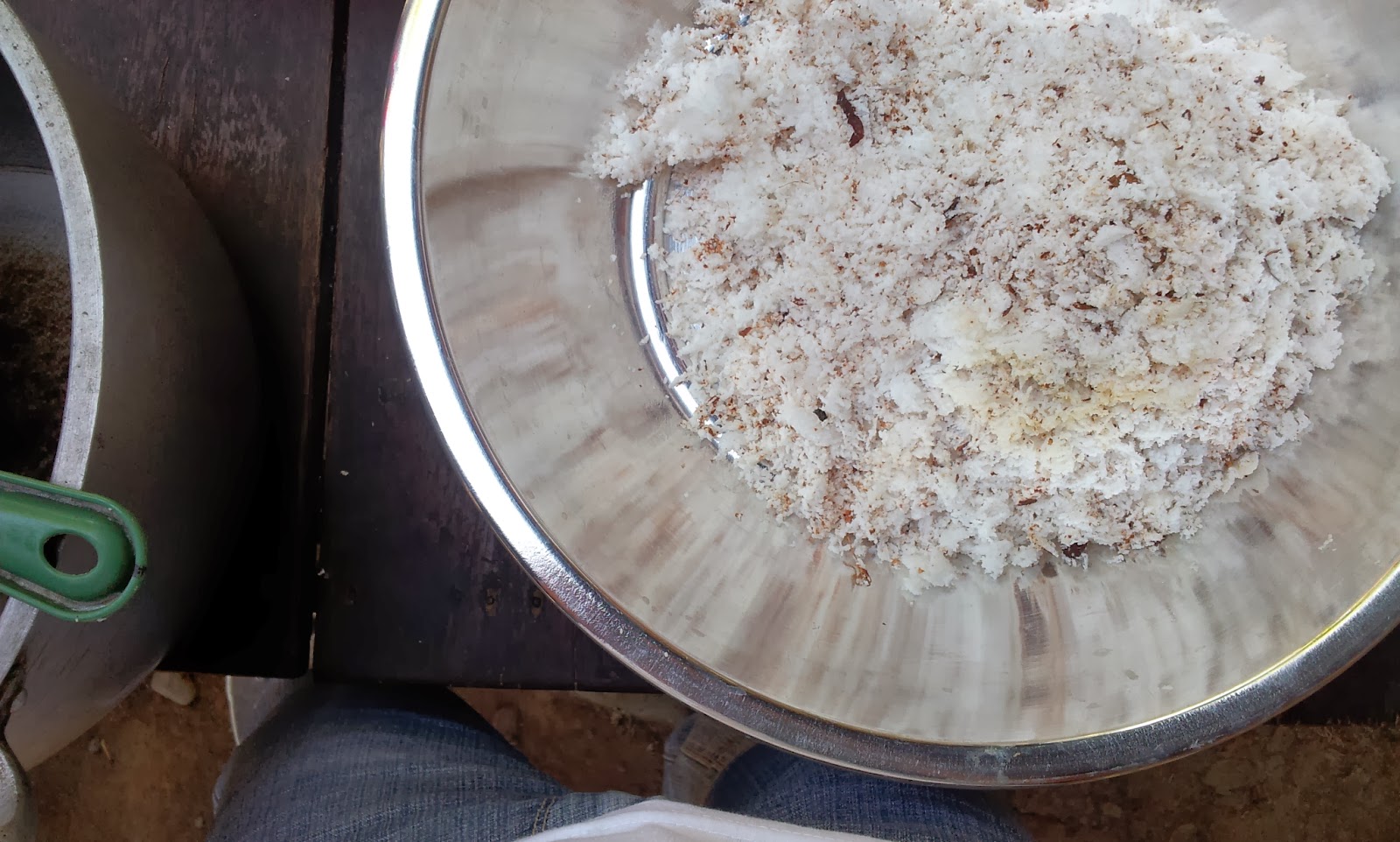I am a kakanin
(rice cake) lover.
When I was little,
every time my mom visited her bestfriend at her office in Malabon, she would
bring home a bilao of sapin sapin, a round kakanin with various colors that are pleasing to the eyes and
irresistible for the stomach.
In Antipolo City where we used to live, I also had tasted many times the triangular kalamay with latik sprinkled on top and suman which can be fried in margarine or butter.
Then in Pangasinan, my taste buds have been
aquainted with other kinds of kakanin. One
of these is bibingkang latik, a
mixture of glutinous rice, coconut milk and sugar. Spread on top is a mixture
of coconut milk and sugar. Recently, due to a project I’m currently working on
(Basista’s audio-visual presentation), I was lucky enough to witness the
step-by-step process in making this delicacy.
In Basista, Pangasinan, Kuya Romy is the lone bibingkang latik maker in Brgy. Dumpay.
His product, however, is not sold at the public market. He only makes some when
there are orders for such occasions as wedding and christening, or for pasalubong.
 |
Even the employees at the
municipal hall order bibingkang latik
from Kuya Romy.
He showed us the arduous task of bibingka making including the extraction
of coconut milk from coconut shavings.
 |
 |
2 kg malagkit (glutinous rice)
3 coconuts (1 for the malagkit, 2 for the coconut-sugar spread
or katiba)
6 packs of white sugar (1/4 kg
per pack—4 for the katiba, 2 for the malagkit)
Four packs of sugar had been
cooked until it melted and turned red. Kuya Romy, then, poured the previously
extracted coconut milk (from the shavings of the two coconuts) into the preparation.
He boiled the mixture for about 45 minutes until it thickened. At the same
time, he cooked the malagkit in
another mixture of coconut milk and sugar, just the way we cook rice.
 |
 |
 |
Later on, Kuya Romy transferred
the cooked malagkit into the round
earthenware laid with banana leaves and flattened it.
 |
 |
 |
Then, he spread the katiba on top.
 |
Another earthenware was placed on
top of the one containing the preparation. Kuya Romy filled it with several
pieces of wood and set them on fire later on. This would cook the preparation
beneath.
 |
 |
Three hours later, et voila! Bibingkang latik was ready.
 |
Prices:
Small, 8 inches-P300
Medium, 12 inches-P450
Large, 16 inches-P600
During the Holidays, production
is at its peak and orders come rushing in.
While Basista pushes for the
promotion of bibingkang latik as its
One Town, One Product (OTOP), Kuya Romy wishes to acquire a huge concrete stove
(pugon) with a chimney. That way, he
said, he could increase his production to meet the growing demand for this
delectable delicacy.


No comments:
Post a Comment